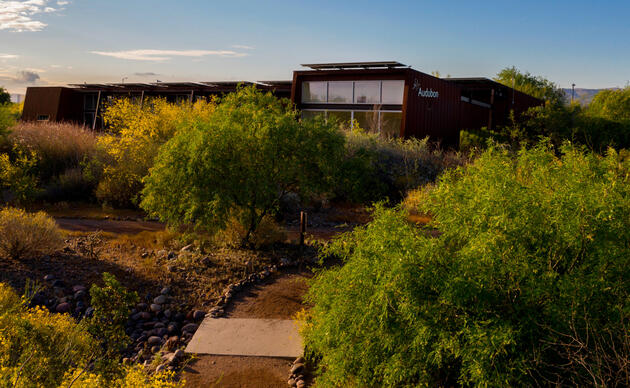Arizona is known for its sweltering heat, burning sun, and desert landscapes. This image doesn’t quite evoke “bird sanctuary,” so it may be surprising to some to learn that Arizona is one of the most biologically diverse states in the nation and is home to more than 530 bird species. Even during the summer, migrating birds visit as they look for a place to fuel up or breed.
Arizona’s diverse landscapes of desert aridlands, forests, grasslands, and riversides support these birds, but resident and migratory birds alike are in crisis as rising temperatures and shifting weather patterns affect birds’ ability to find food and reproduce.
According to the National Weather Service, 2024 was the warmest year recorded in the history of Phoenix, Arizona, and occasional thunderstorm days during the monsoon were few and far between. Even the cooler fall and winter months were hotter and drier than normal. Phoenix faced a dry spell of six consecutive months without rain from July 2024 to January 2025.
Resident and migratory birds depend on monsoon and winter rains to bring water, cooler temperatures, and the food they need, including insects and blooming wildflowers. Migrating hummingbirds like the Rufous Hummingbird, for example, time their arrival around the seasonal blooming of native flowers.
Birds are incredible at adapting, but a continuous streak of dry monsoons and winters can push birds beyond their limits, and our changing climate is just one very real aspect of what’s threatening birds in the southwest and across the Americas.
We’ve lost three billion birds across North America since 1970, and the decline continues. Development, wildfires, pollution, water scarcity, and a changing climate are degrading critical bird habitats, and Arizona is home to some of the nation’s most vulnerable species. The State of the Birds 2025 report shows even birds we thought were safe like many ducks are now also declining, even after past conservation gains.
But it’s not too late to take action to help protect the birds that remain.
Audubon Southwest is the regional office of the National Audubon Society, covering Arizona and New Mexico. We work to protect birds and the places they need using science, advocacy, education, and on-the-ground conservation, but we cannot do this work without your help.
What you can do
At home:
In your community:
At the ballot box:
Support leaders and policies that protect habitats for birds and people by:
Join our Audubon Southwest network to receive news and alerts about these issues and to learn how you can help protect Arizona’s land, water, and wildlife. 







